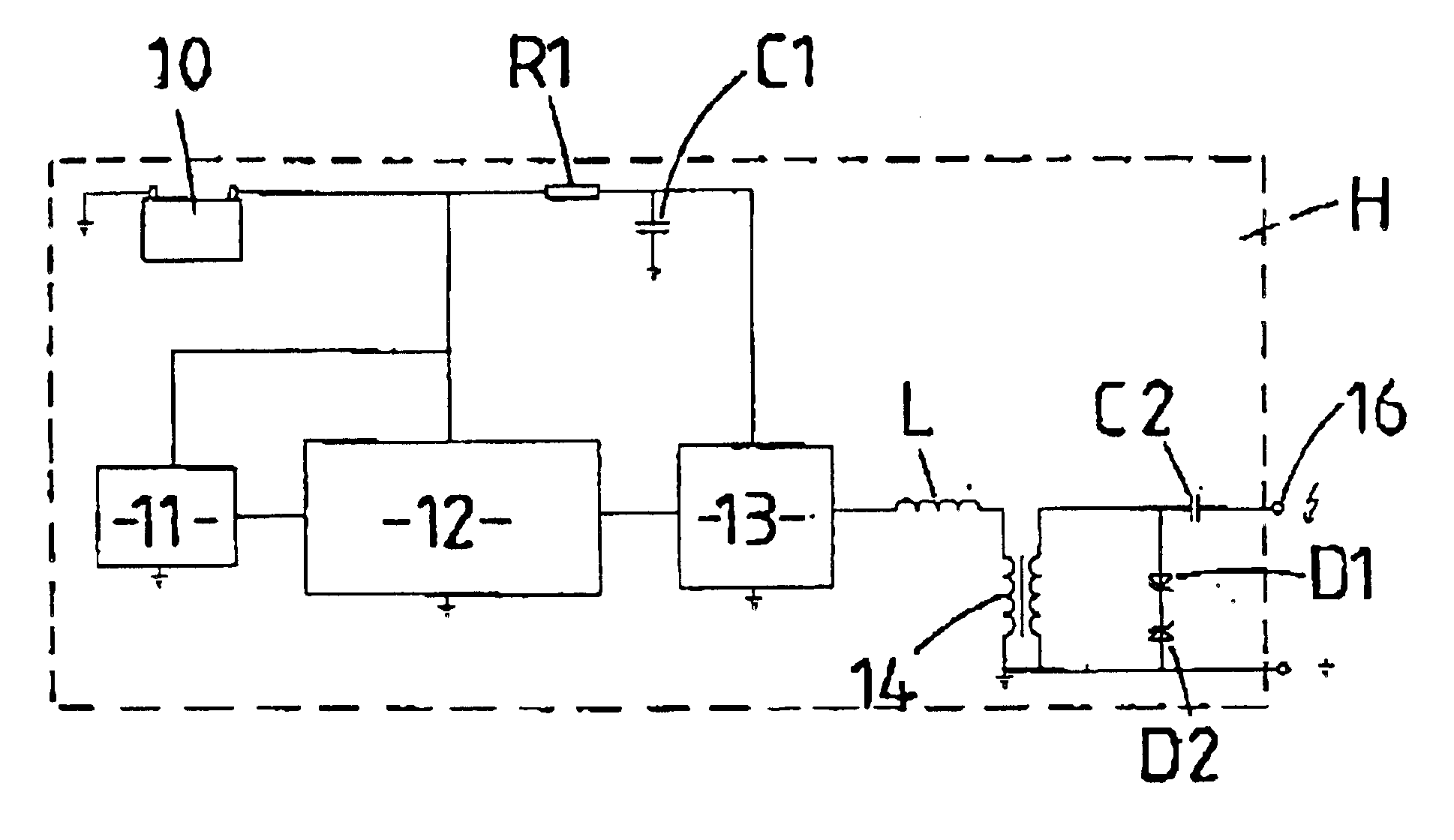Data transmission
a data transmission and data technology, applied in the field of data transmission, can solve the problems of inability to meet the needs of large-scale installations, etc., and achieve the effect of high reliability
- Summary
- Abstract
- Description
- Claims
- Application Information
AI Technical Summary
Benefits of technology
Problems solved by technology
Method used
Image
Examples
Embodiment Construction
As mentioned previously the power source for the transmitting device is a small, lightweight battery 10 in this case a 9V battery. The componentry of the device is contained within a housing (indicated at “H”). A user interface 11 may consist of a number of lamps and / or a numerical or graphical display and / or a number of pushbutton or other types of switches.
The user interface 11 is connected to a control circuit 12 which will normally be built using one or a number of digital circuits such as a microcontroller. This control system 12 controls the lamps, controls what is shown on the display, reads the state of the switches and, when appropriate, produces a series of signals to the power interface circuit 13.
The power interface circuit 13 amplifies the signals generated by the control circuit 12. The power interface circuit 13 is not powered directly from the battery 10 but from an energy storage capacitor C1. The capacitor C1 is slowly charged by the battery 10 via resistor R1. In ...
PUM
 Login to View More
Login to View More Abstract
Description
Claims
Application Information
 Login to View More
Login to View More - R&D
- Intellectual Property
- Life Sciences
- Materials
- Tech Scout
- Unparalleled Data Quality
- Higher Quality Content
- 60% Fewer Hallucinations
Browse by: Latest US Patents, China's latest patents, Technical Efficacy Thesaurus, Application Domain, Technology Topic, Popular Technical Reports.
© 2025 PatSnap. All rights reserved.Legal|Privacy policy|Modern Slavery Act Transparency Statement|Sitemap|About US| Contact US: help@patsnap.com


